Historical sites
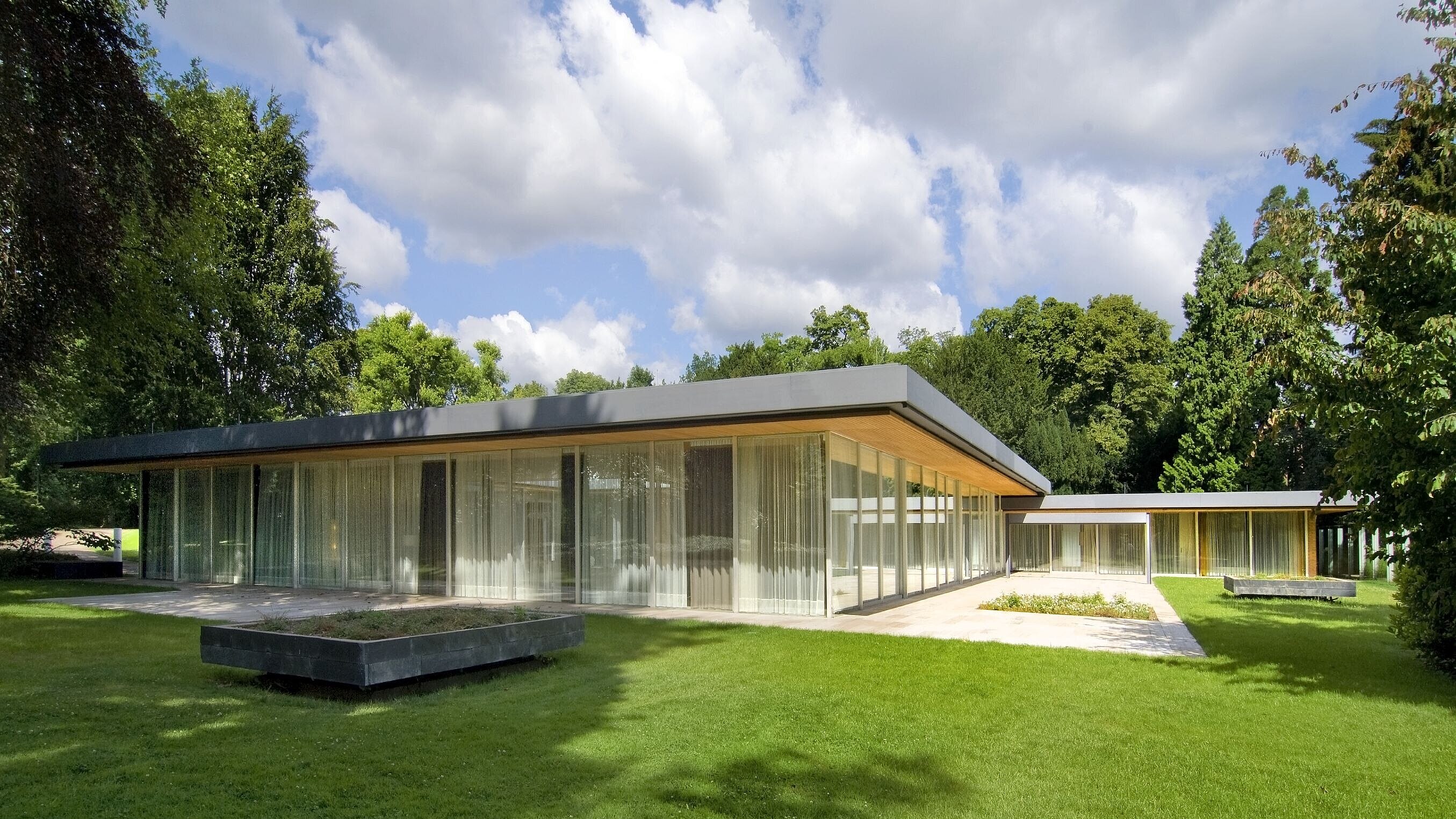
The former government district on the banks of the Rhine was plain and modest, attesting to the temporary nature of Bonn’s time as capital city. The post-War new builds are testimony to the democratic new beginning and likewise break with the pathos of the Third Reich. A new culture of political communication arose: Everything was close at hand and cross-party dining at the local Italian restaurant was part and parcel of the fledgling democracy.
Why not take a glance behind the scenes of Bonn as West Germany’s political hub? Wander round the park of Palais Schaumburg and past the “Chancellors’ trees”, visit the Federal Chancellors’ former residence and reception building, and sense history in the making in the plenary chamber of the Bundesrat: It was here that notable laws were enacted.
Chancellor’s Bungalow
The Federal Chancellor’s residence in Bonn
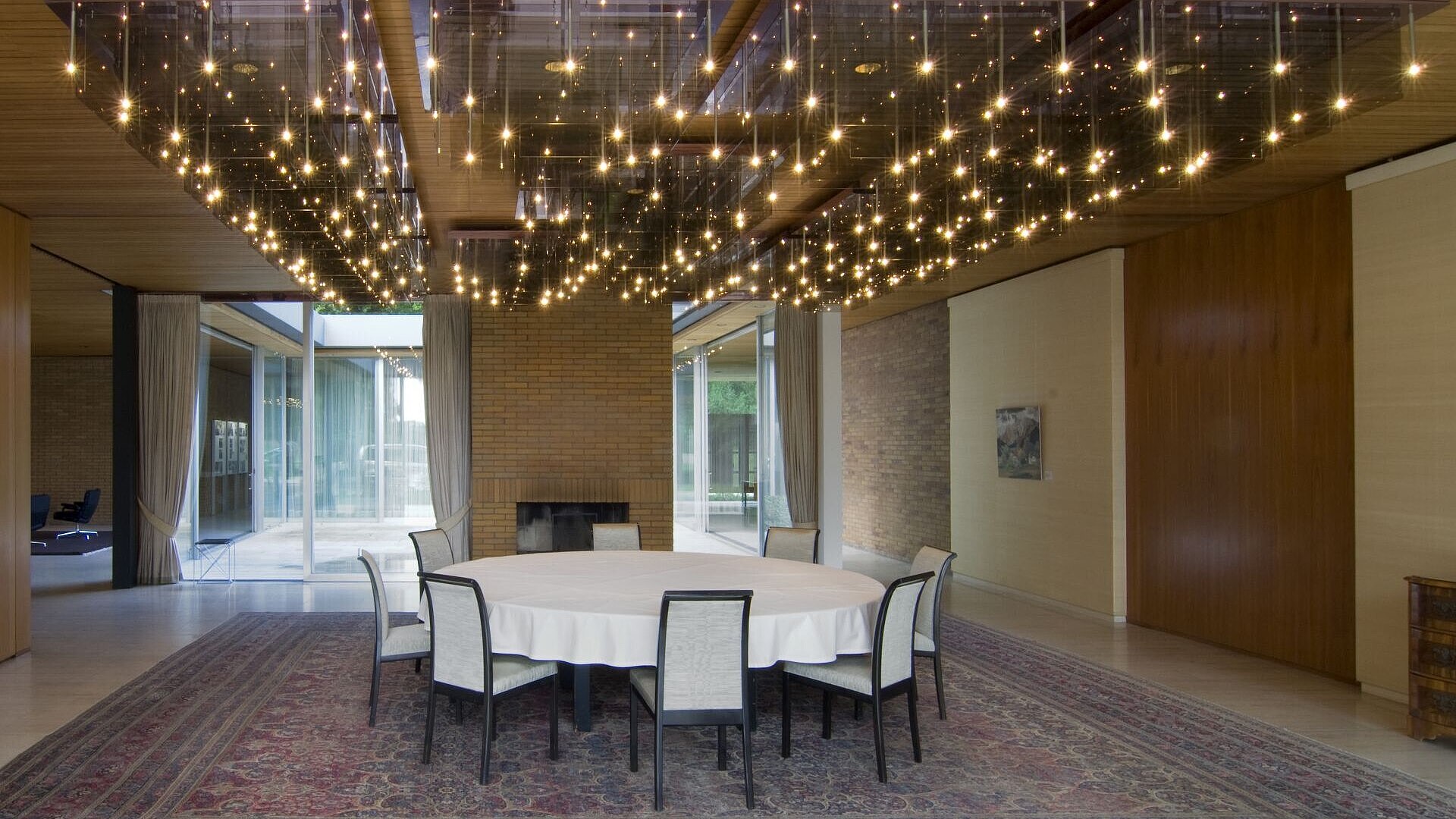
Chancellor’s Bungalow
The Federal Chancellor’s residence in Bonn
Suffused with light and clear: The Federal Chancellors’ former residence and reception building symbolizes transparency and openness. In 1963-4, architect Sep Ruf designed the modern building on behalf of Federal Chancellor Ludwig Erhard, and it has been heritage-listed since 2001. An exhibition at this historical site narrates the building’s history. How did the various heads of government use the residence and the study there?
There are several different ways groups and individual visitors can visit the Chancellor’s Bungalow. Since the building is on the grounds of the German Federal Ministry for Economic Cooperation and Development, access to the Chancellor’s Bungalow is limited for security reasons.
Please note: The Chancellor's Bungalow is closed for renovation work and is expected to reopen in autumn 2025.
No single group or group of individuals may be larger than 20 people. Entrance is only possible with a valid ID card.
For a group there are guided visits from Tuesdays to Fridays from 11 a.m. until 3 p.m. On Saturdays groups can visit the Chancellor’s Bungalow from 1 p.m. – 5 p.m. To book a group visit, please contact our visitor service at: 0228/9165-400 or besucherdienst-bonn(at)hdg.de.
Guided visits in German: Individuals can visit the Chancellor’s Bungalow on Sundays at 2 p.m., 2.30 p.m. or at 3 p.m. Please register in advance online. The meeting point is the Information Desk in the lobby of the Haus der Geschichte. Entry on the day of the visit only with valid ID.
Bundesrat
The birthplace of the Basic Law
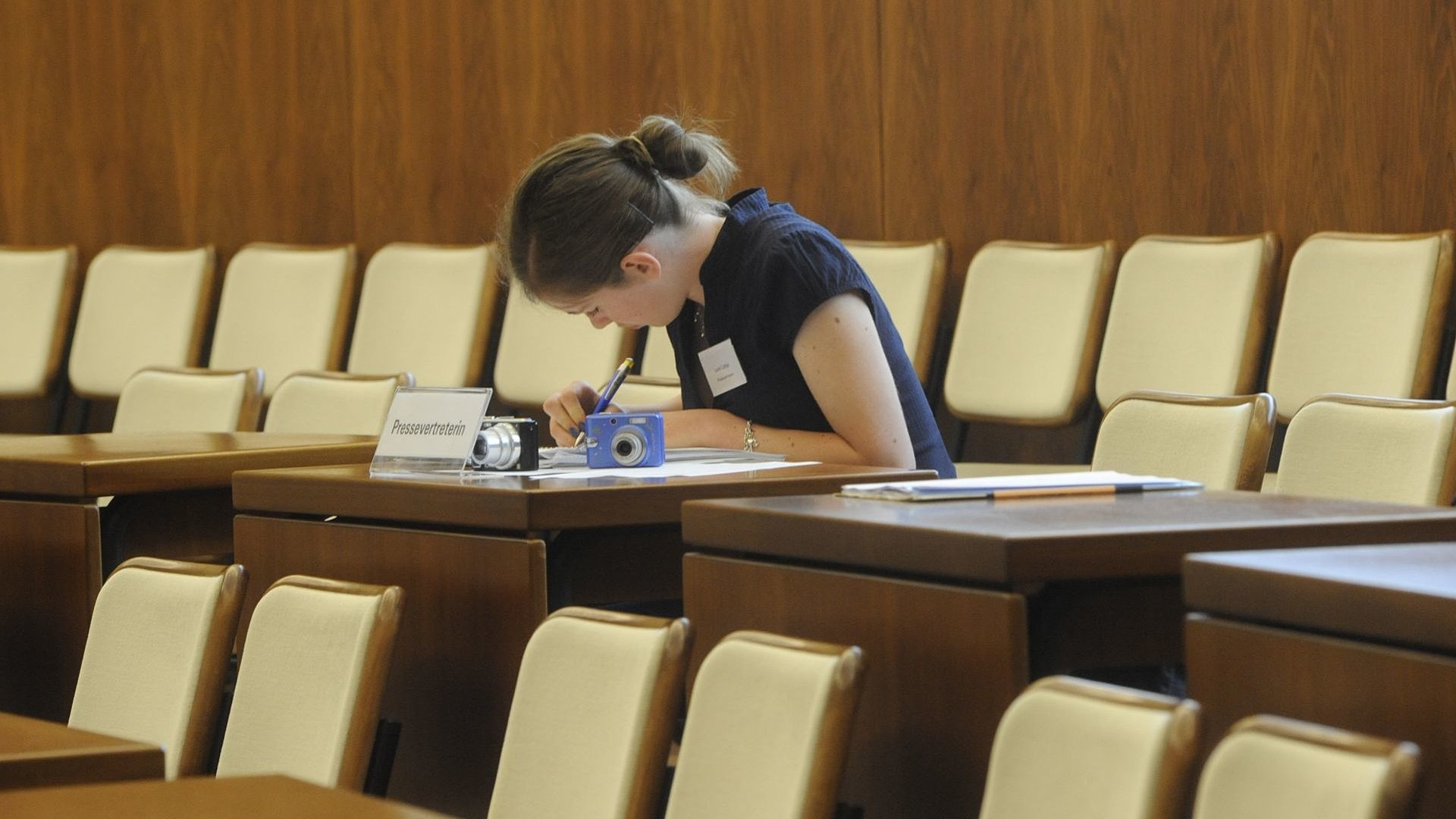
Bundesrat
The birthplace of the Basic Law
As one of five constitutional organs of the Federal Republic of Germany, the Bundesrat is a central site of democracy. From 1949 until the relocation to Berlin in 2000, it was based in Bonn. There, representatives of the federal states decided on whether to approve bills of parliament.
Visit the former Bundesrat in the historical chamber and gain an impression of the setting where the German Basic Law was enacted. Our exhibition at this historical site presents the players who were involved in drafting the Basic Law in 1948-9 and show how it evolved further until 1990.
The German Basic Law. Exhibition at the Bundesrat
Platz der Vereinten Nationen 7
53113 Bonn
No single group or group of individuals may be larger than 25 people.
Group guided visits
Register for group guided visits by e-mailing staff at Visitor Services or phoning them on 0228/ 9165-400.
Public guided visits in German
Public guided visits take place on Saturdays at 3 p.m. and Sundays at 1 p.m. (the meeting point is the Information Desk in the lobby of the Haus der Geschichte). Please register in advance online.
Getting here:
Underground lines 16, 63, 66
Alight at the station Heussalle/Museumsmeile
Parking spaces for cars and buses: Parkhaus an der Museumsmeile (multi-storey car park), Marie-Kahle-Allee
Parkhaus Bonn Conference Center (multi-storey car park), Welckerstraße/Karl-Carstens-Straße
Parking spaces for wheelchair users in the underground car park at the Haus der Geschichte (entrance on Rheinweg).
Chancellery (1976-1999)
Chancellor’s study and the cabinet room
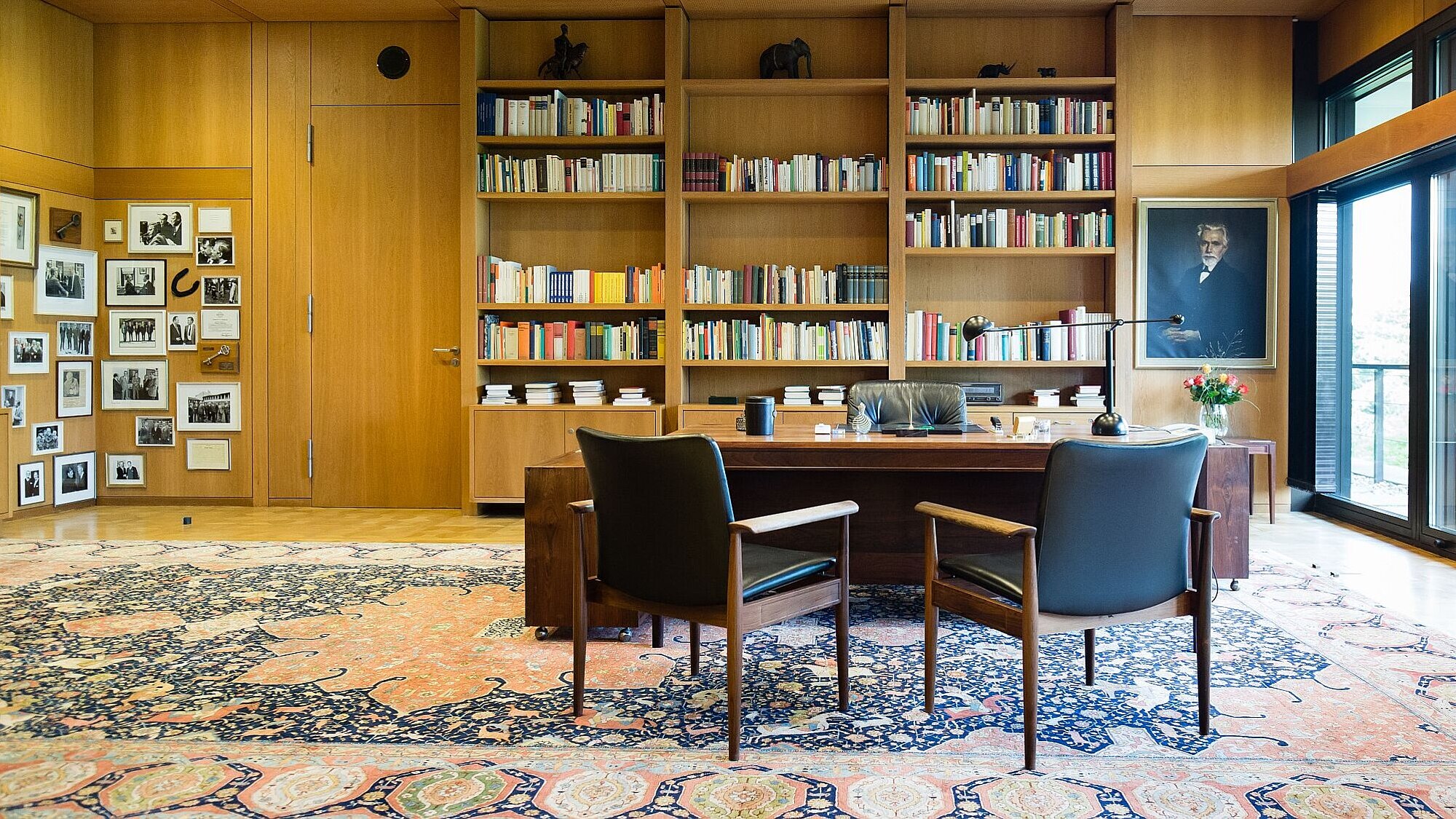
Chancellery (1976-1999)
Chancellor’s study and the cabinet room
“A Rhenish savings bank could just as easily be at home here”, remarked Helmut Schmidt when he started work in the new Federal Chancellery as the incoming Federal Chancellor. The first cabinet meeting in the new building took place on 7 July 1976. It was here that, under Chancellor Helmut Kohl, the decisive talks were held in the run-up to German Reunification in 1989-90.
Visit the historical site of the Chancellor’s study, either in a group or on your own. The Chancellor’s study is fitted out with the original furniture Chancellor Helmut Schmidt chose. The ensemble includes a presentation, based on photos and exhibits (and they also relate to Chancellors Helmut Kohl and Gerhard Schröder) as well as two media stations.
Please note: There are currently no guided tours in the Chancellery.
Group visit
The historical rooms can be visited on Saturdays and Sundays at 10.30 a.m. and the tour takes 90 minutes. To book a group visit (maximum 20 people) please contact our Visitor Services. Entry on the day of the visit only with valid ID.
Individual visits
As an individual visitor, you can take part in a public guided visit on Saturdays and Sundays at 12.00 p.m. or 1.30 p.m. Please register in advance online.
The meeting point is the Information Desk in the lobby of the Haus der Geschichte.
Groups are limited to 20 participants.
Please beware that these regular guided visits are all in German!
All guided visits are free of charge.
PALAIS SCHAUMBURG
Online visits to the office of the Federal Chancellor
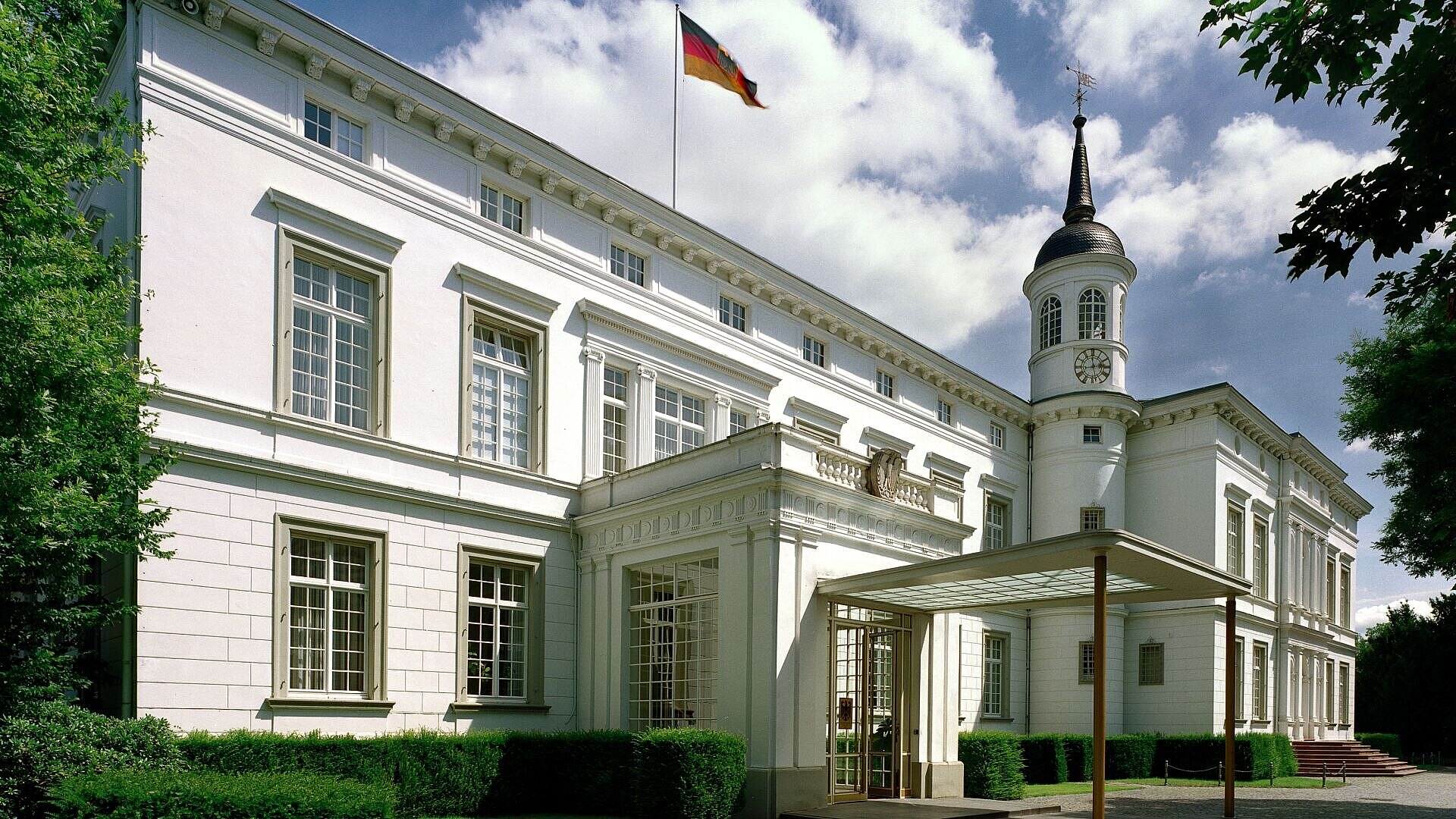
PALAIS SCHAUMBURG
Online visits to the office of the Federal Chancellor
Palais Schaumburg is the Bonn office of the Federal Chancellor. The building was constructed in 1858 and can look back on a colourful history: a millionaire’s villa, a prince’s palace, quarters for soldiers, and the office of the Federal Chancellor.
Owing to renovation work, the Palais will remain closed probably until the end of 2017. You can nevertheless view it using our online panorama. We offer 360° views of all the rooms and show outdoor shots of the building and the park. What does former Federal Chancellor Konrad Adenauer’s study look like? What were the furnishings in the cabinet room and what is the famous “Hallstein room”?
Path of German Democracy
Walking the path of the Federal Republic of Germany
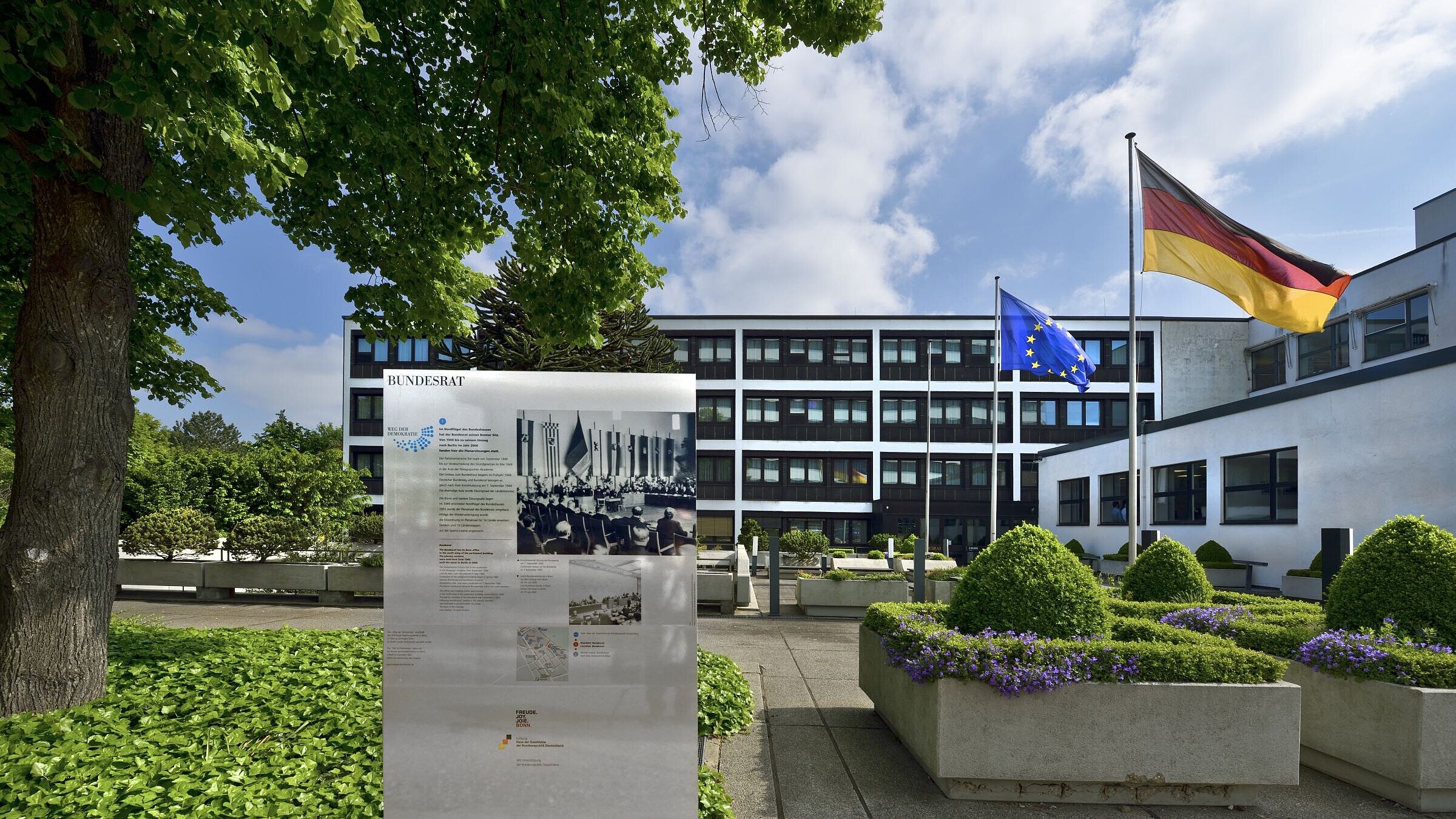
Path of German Democracy
Walking the path of the Federal Republic of Germany
Why not travel back in time into Bonn’s past as the capital city? The Path to Democracy starts at the Haus der Geschichte and leads you, by means of signs, an online pathfinder or a historical guidebook, to the key sites of democracy in the former capital city of Bonn.
In 90-120 minutes you can find out more about the Bundesrat, the Federal Press Conference, Villa Hammerschmidt, the Parliamentary Council and other significant historical sites in the former government district in Bonn.